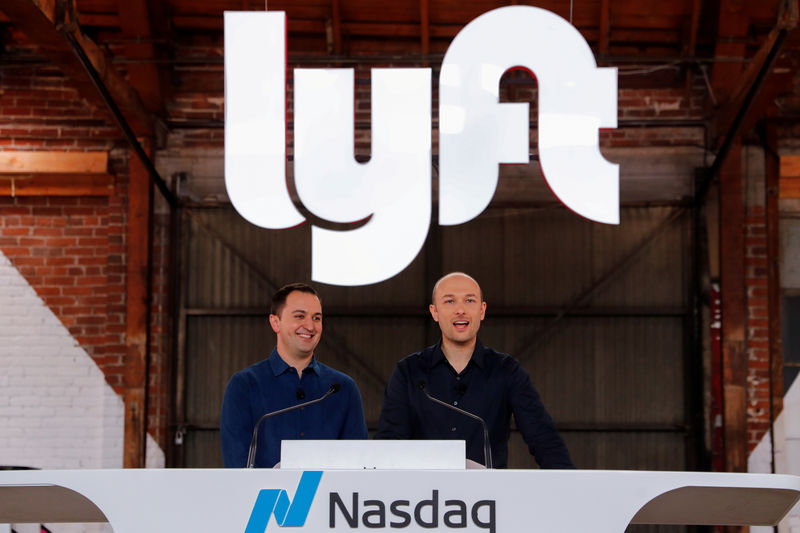By Alexandria Sage and Vibhuti Sharma
SAN FRANCISCO/BENGALURU (Reuters) - Ride services company Lyft (NASDAQ:LYFT) Inc forecast that its losses would peak this year as it controlled expenses and got more revenue from each customer, posting a $1.1 billion quarterly loss on Tuesday, days ahead of rival Uber's IPO.
"We are encouraged by our strength of our core business and see a clear path to profitability in ride sharing," said Chief Financial Officer Brian Roberts, sparking a short-lived bump in shares that subsequently pared gains.
Lyft promised profit in ride-hailing services without giving any timeline, but it previously had warned regulators it may never make money overall as it invests heavily in self-driving cars, renting scooters and other ventures.
As ferocious growth slows at Lyft and Uber Technologies (NYSE:UBER) Inc, investors are paying more attention to what the companies need to do to make a profit.
Investors appeared uncertain how to interpret the company's performance, with shares moving up and down after the bell. Since Lyft's IPO on March 29, shares had fallen 23%.
The report, Lyft's first as a public company, showed revenue nearly doubled for the quarter ended in March but forecast that growth would slow to 52% to 53% for the full year. Lyft is watched as a bellwether for Uber, which will price its offering on Thursday.
Lyft said it was getting more revenue per customer, reducing incentives and boosting margins, although investments in areas such as self-driving, scooters and bikes were masking improvements in its core business.
New technology to match drivers and riders, and higher-priced rides in luxury vehicles were helping boost margins, it said. Lyft said its adjusted EBITDA margin improved to negative 28% from negative 60% a year ago.
The company, which says it has nearly 40% of the U.S. ride-hailing market, said increased demand helped push revenue to $776 million in the quarter, above analysts' average estimate of $739.4 million, according to IBES data from Refinitiv.
A second-quarter revenue forecast of $800 million to $810 million was ahead of analysts' expectations of $783.1 million. The low end would amount to a revenue increase of 58%, however, far short of the growth Lyft has enjoyed recently.
Last year's second-quarter revenue got a boost from a price hike, making this year's comparison more challenging, Lyft said.
Atlantic Equities analyst James Cordwell called the results "pretty strong," with hints that Lyft was continuing to take market share from Uber. He cautioned, however, that Lyft's outlook did suggest "a meaningful slowdown in revenue."
"The question will be whether this is just conservatism, Uber starting to fight back, or the company hitting tougher comps," Cordwell added.
In a snub to Uber, Lyft also announced a partnership with Alphabet (NASDAQ:GOOGL) Inc's Waymo in which Lyft will deploy 10 self-driving vehicles around the Arizona city of Phoenix by the third quarter. Uber has welcomed Waymo cars on its network but has not signed any deals.
For its second quarter, Lyft forecast an expected adjusted EBITDA loss of $270 million to $280 million.
Lyft posted revenue of $37.86 from each of its 20.5 million active riders during the first quarter, a 34% increase in revenue and a 46% increase in riders over the same period in 2018.
A net loss widened to $1.14 billion, or $48.53 per share, in the first quarter ended March 31 from $234.3 million, or $11.69 per share, a year earlier. Stock-based compensation and payroll tax made up $894 million of that amount.
Last year, Lyft had 30.7 million riders and 1.9 million drivers in more than 300 cities in the United States and Canada. In comparison, Uber - which could be valued at about $90 billion - had 75 million riders and 3.9 million drivers in 65 countries.
